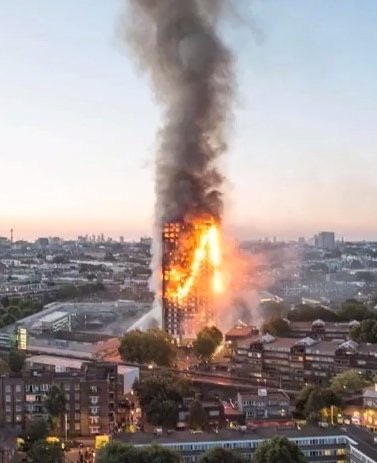
Like the whole country, we watched the news unfold, spellbound, in a state of incredible shock; how could this disaster happen? What could have been done to avoid it? They’re questions everyone is asking.
The UK construction industry will need to implement serious changes after the devastating fire at Grenfell Tower on June 14th. At least 80 people are dead, or missing presumed dead, after the worst housing disaster in Britain since World War II.
A criminal investigation is now underway, and a public inquiry has been launched to establish how such a tragedy could have happened in one of the world's richest and most technologically advanced countries.
Experts have reviewed the footage of the blaze ripping through the residential tower in west London, and immediately it was evident that the cladding played a significant role in the rapid spread of fire. You could even see panels falling to the ground in flames.
The Grenfell Tower public inquiry won't only ask fundamental questions about the cladding – it will also look at everything that contributed to the loss of life. There will be a focus on whether a sprinkler system could have saved lives, and whether there was adequate emergency lighting and smoke ventilation to allow people to escape.
Investigators will examine the suitability of the Building Regulations; who was responsible for approving the final designs and completed works; and whether contractual arrangements undermined fire safety. The Fire Regulations will need to be reviewed as it is believed that Part B is no longer fit for purpose. This crucially includes ensuring external walls and roofs will resist the spread of fire and requires a safe means of escape from the building.
There are valid reasons to clad buildings, but the choice of materials used will be closely scrutinised moving forward. Thermal insulation was always the main criteria, but fire safety was never a concern until the disaster struck.
As building services consultants, Karsons Consulting have in-depth knowledge in the choice of materials used for thermal insulation, but in major projects – as we have reported in previous blogs – there is an element of cost cutting to implement the project with the most cost effective solution. While this specific cladding may have met thermal design criteria, there are other types of cladding that do not pose fire risks.
Fire in many buildings may originate for several reasons, and there are forensic teams studying this at present. Grenfell Tower was designed in 1967 and completed in 1974. It was refurbished in 2016, but to what extent? The main electrical and fire alarm services/infrastructure are reported to have remained untouched during this refurbishment. It will be a process of elimination to deduce what we consider a catalogue of failures to identify the potential cause.
Living in a residential apartment block of five storeys myself, I understand the challenge faced by management companies and local councils to ensure fire safety and the general safety of their occupants. There is always the element of ensuring costs are minimised as the collection of service or management charges only allows for the routine services. But the essential documentation that building managers should hold; fire risk assessment, smoke vent testing, electrical certification... should all be in place. This is not as tightly regulated in residential buildings as in the commercial domain, but the risks are the same.
In light of this disaster, we offer any concerned clients a free initial evaluation of their risk following a documentation review. We will audit the statutory documentation to ensure that essential servicing is undertaken and documentation is available. On several buildings, we identify that the fire risk assessment is in place, but the remedial actions highlighted are not considered. We provide expertise in identifying those elements that may pose a serious risk. Furthermore, electrical testing and certification is essential for the safe operation of any building.
For more information or to book a site visit by one of our team, please contact us by email on info@karsonsconsulting.com.
Karsons Consulting are members of the Chartered Institute of Building Services Engineers, The Association of Consultancy and Engineering, British Institute of Facilities Managers and the Building Services Research and Information Association.